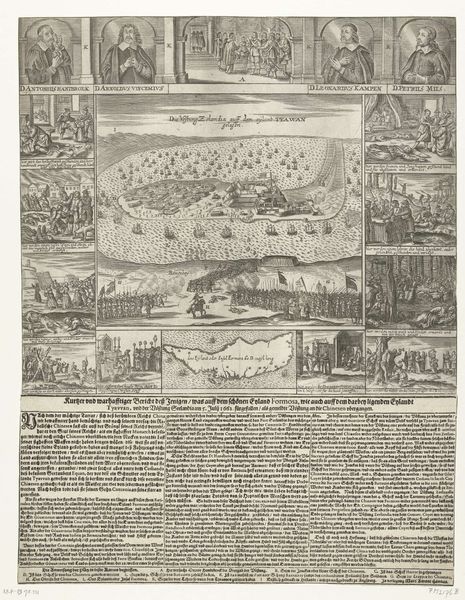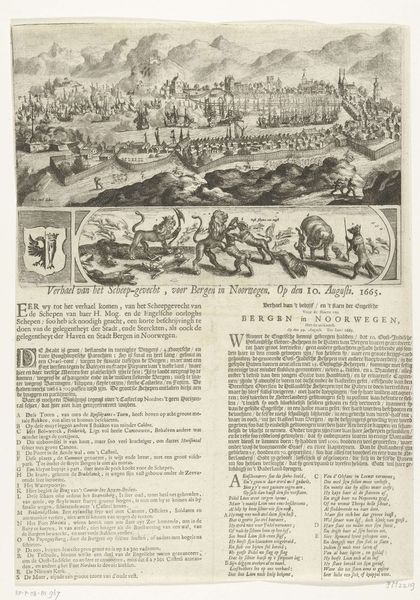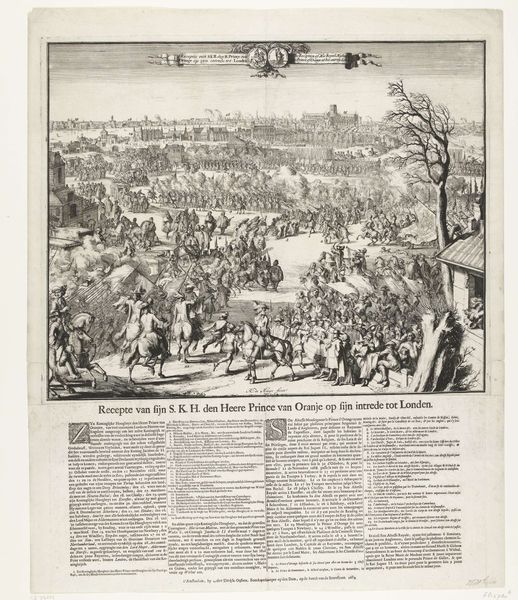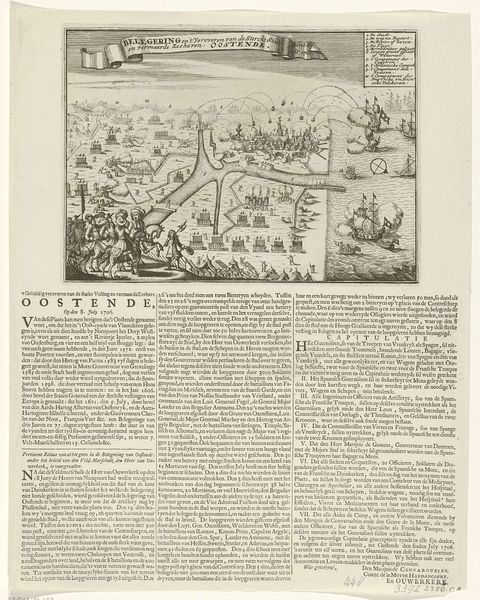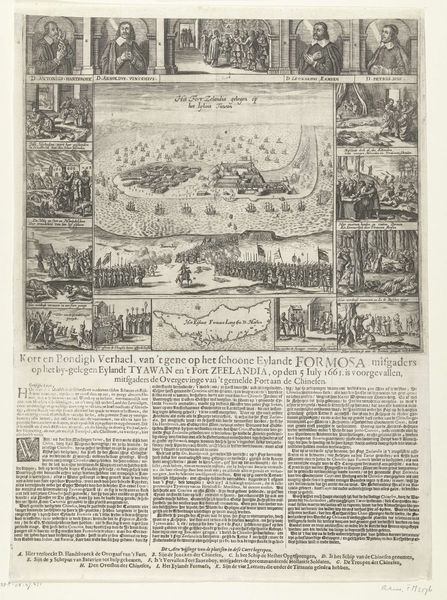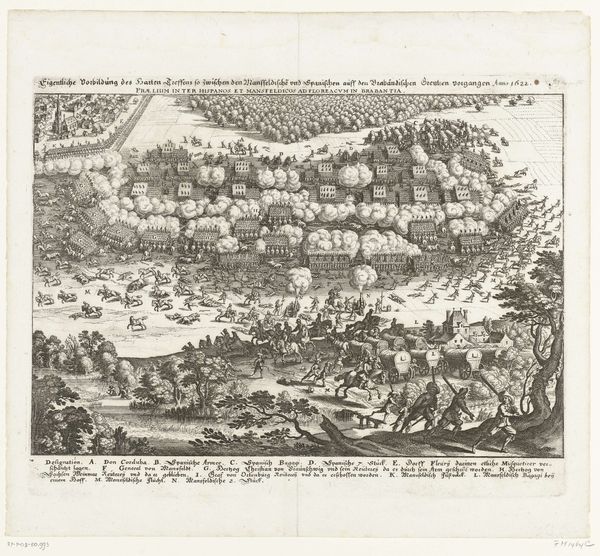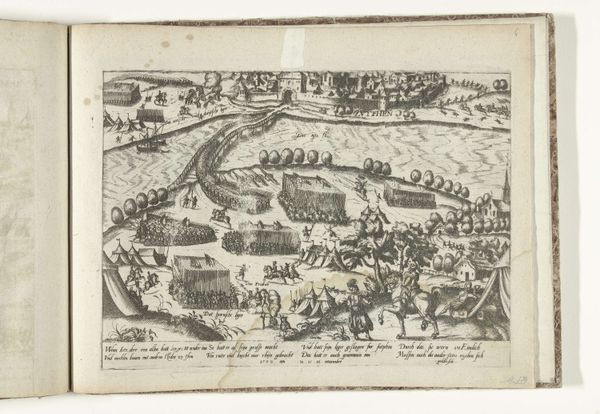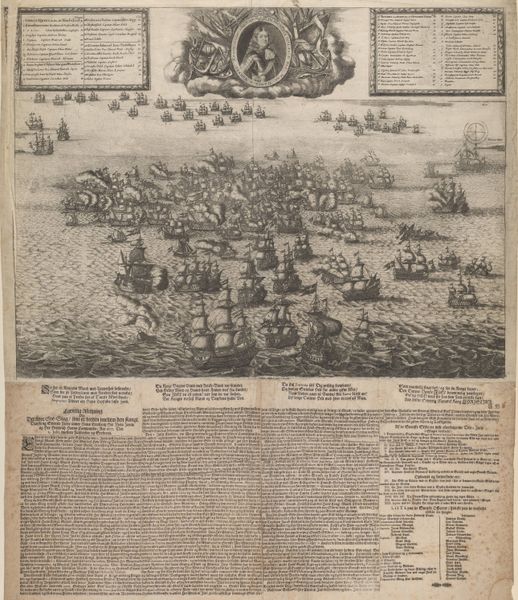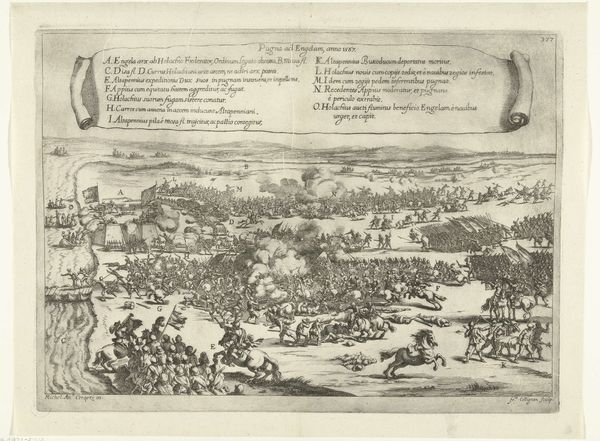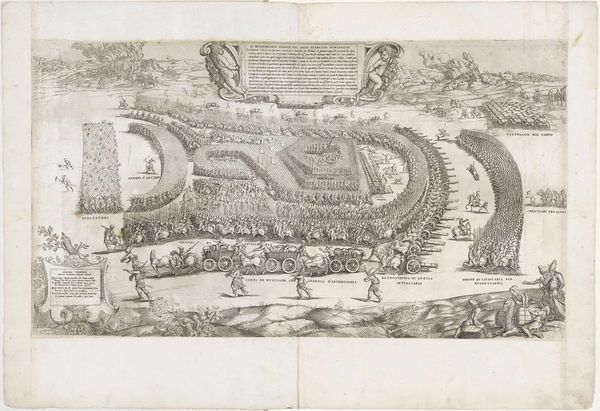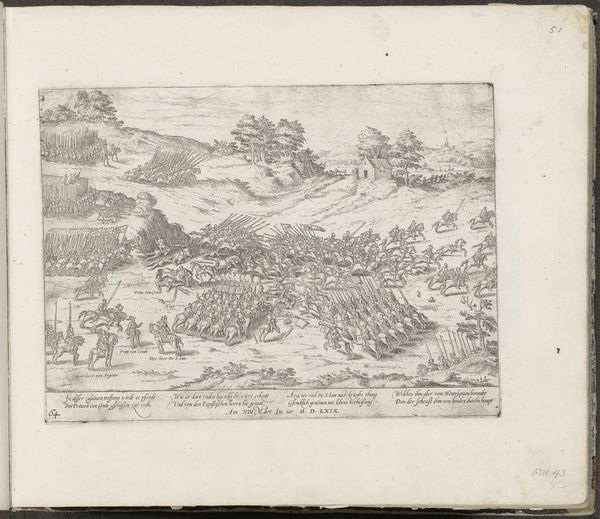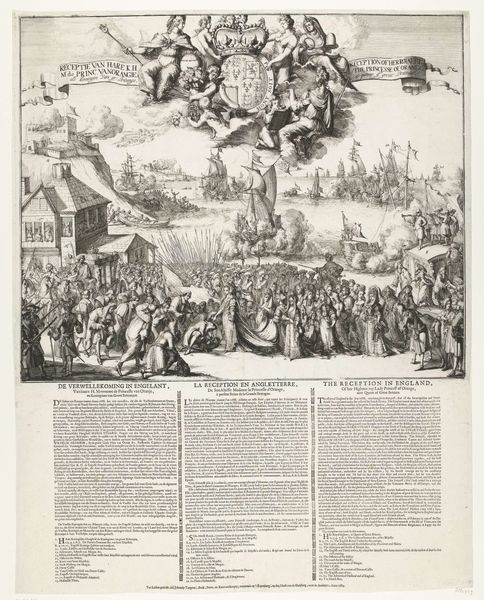
print, ink, engraving
#
narrative-art
#
baroque
# print
#
ink
#
cityscape
#
history-painting
#
engraving
Dimensions: height 470 mm, width 402 mm
Copyright: Rijks Museum: Open Domain
Curator: This is an engraving titled "Slag bij Sasbach, 1674," dating from 1675, and currently held at the Rijksmuseum. Looking at this dense scene, I’m immediately struck by how the artist has attempted to represent the chaos of battle within a seemingly ordered framework. It feels contradictory. What catches your eye? Editor: It's interesting that you point out the contradictory elements! I immediately focused on the tiny figures that make up the armies; it almost feels like an ant farm, a detached observation of war. Given that this depicts a specific battle, how might its audience have viewed it back in the 17th century? Curator: That’s a key point to consider. Remember, printed images like this were one of the primary ways people consumed news and visualized distant events. Think of it as early forms of propaganda and journalism intertwined. It was less about photographic accuracy, and more about constructing a particular narrative for the public, aligning with the political interests of those commissioning and circulating the image. Does it glorify conflict or provide information, would you say? Editor: That’s a good question. I see the layout – almost map-like, but I also feel a sense of glorification through the sheer scale of the armies and the dynamic composition. Perhaps its initial audience interpreted it as a testament to the power and organizational capabilities of the warring factions. Is this a pretty typical interpretation? Curator: Not necessarily, because, of course, there is nuance to be found. Some might have seen it as a somber reflection on the cost of war, highlighting the large-scale loss of life through the symbolic rendering of those 'ant-like' figures. Its reception depended on their existing political and social views. These engravings can be used as evidence of the complex relationships between war, representation, and public opinion in the Baroque period. Editor: It’s incredible how much we can learn about the 17th century simply by considering its depictions of this battle and its potential audiences. Curator: Precisely. And, thinking about it from the perspectives you provided allows for the complexity needed when discussing the role of art, history and its publics.
Comments
No comments
Be the first to comment and join the conversation on the ultimate creative platform.
